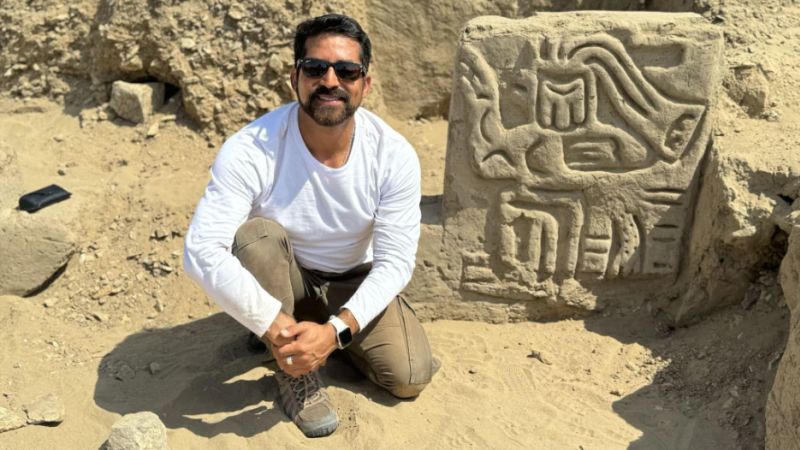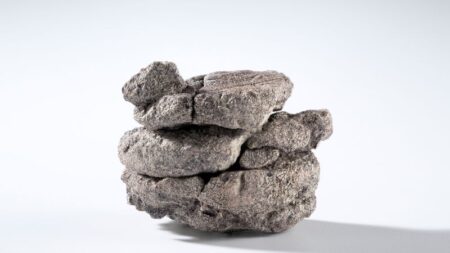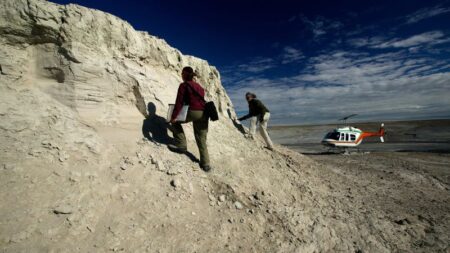In a groundbreaking discovery, archaeologists in Peru have uncovered the remains of a 4,000-year-old temple and theater, shedding new light on the origins of complex religions in the region.
The excavation of the archaeological site of La Otra Banda, Cerro Las Animas, began in June after local authorities raised concerns about looting near the town of Zaña. The team, led by Luis Muro Ynoñán from the Field Museum in Chicago, unearthed ancient walls made of mud and clay just six feet beneath the surface.
Surprisingly, the team discovered a section of a large temple and a small theater with a backstage area and staircase leading to a stage-like platform. Muro Ynoñán remarked that this theater could have been used for ritual performances in front of a select audience.
One staircase in the theater was adorned with an intricate carving of a mythological bird-like creature, dating back to the Initial Period between 2,000 to 900 BC. This finding provides valuable insights into the early religious practices in Peru.
The discovery predates well-known archaeological sites in the country, such as Machu Picchu, by 3,500 years. Muro Ynoñán emphasized the importance of these early religious spaces in understanding the emergence of complex belief systems in the Andes.
The team also found large murals painted on the walls, which Muro Ynoñán plans to analyze in a lab along with carbon dating to confirm the site’s age. This discovery adds to the array of archaeological finds from pre-Hispanic times in Peru.
In recent months, Peruvian archaeologists have unearthed other significant discoveries, including a 3,000-year-old tomb and a mummified adolescent from over 1,000 years ago near the capital, Lima. These findings continue to deepen our understanding of ancient civilizations in Peru.










